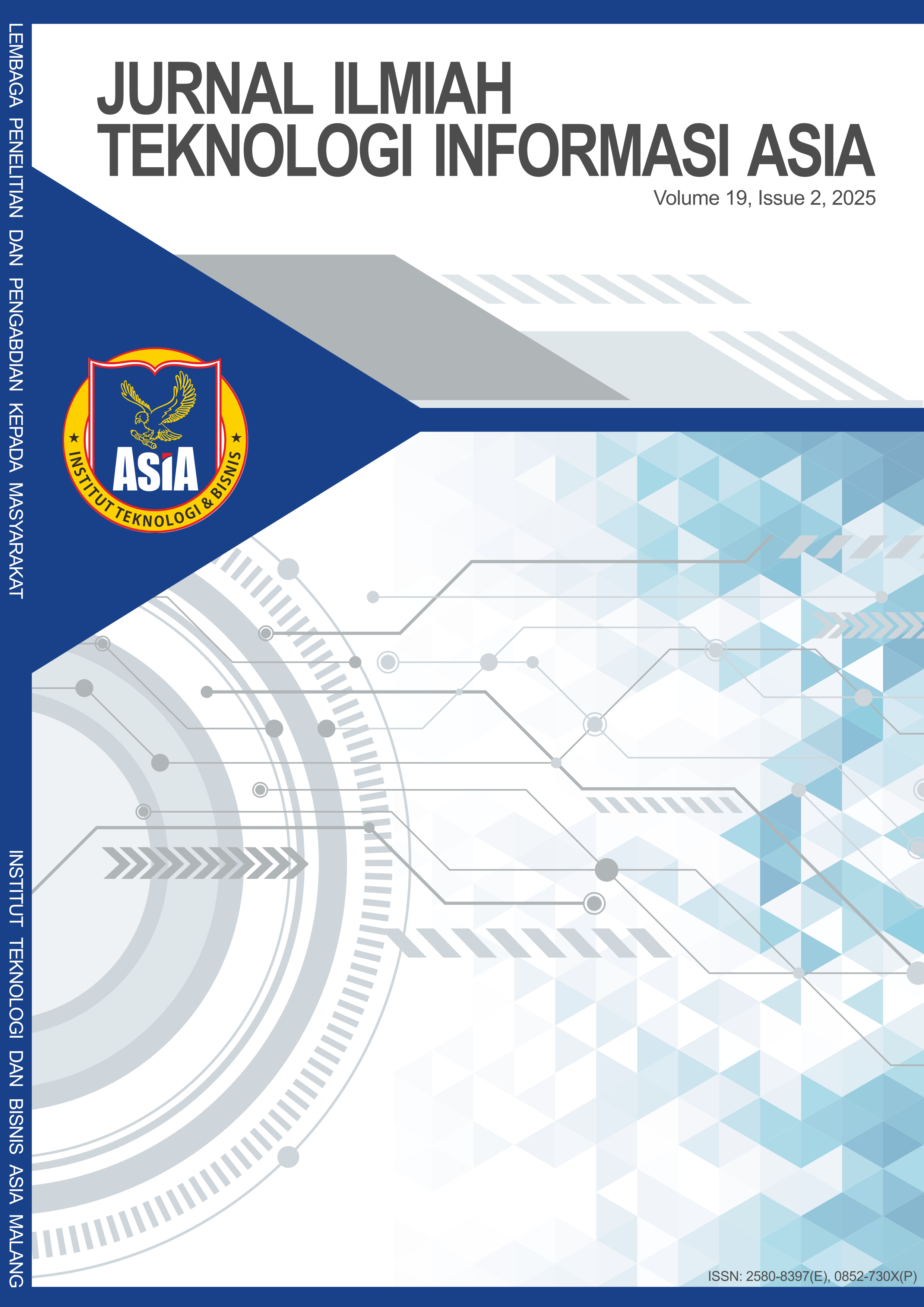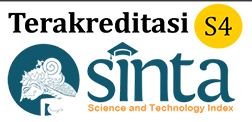Development of an online RIASEC test web application at bakat.uam.ac.id using the Agile Scrum method
DOI:
https://doi.org/10.32815/jitika.v19i2.1185Keywords:
riasec, scrum, user story, moscow rules, web applicationAbstract
The modern digital era has created a complex job market, increasing the need for accurate career assessment tools. The RIASEC (Realistic, Investigative, Artistic, Social, Enterprising, Conventional) test is a widely recognized framework for aligning personal characteristics with suitable work environments. However, conventional software development methods often struggle to accommodate the continuous refinement required by digital transformation and evolving user needs. This study addresses these challenges by developing an online RIASEC test web application using the Agile Scrum methodology. The research aimed to construct a flexible Scrum framework for this specific application and measure its effect on development speed. The process involved three sprints, with features defined as user stories and prioritized using MoSCoW (Must-have, Should-have, Could-have, Won't-have) rules. The results showed that the duration of sprints 1, 2, and 3 is 2 weeks, 3 weeks, and 3 weeks, respectively, with a total completion time of approximately 269 hours, 7 hours ahead of the 276-hour estimate. The study concludes that Agile Scrum is an effective approach for developing scientific web-based instruments, as it provides a structured yet flexible process that accommodates iterative feedback and successfully mitigates project risks.
Downloads
References
Agustini, F. (2023). Implementasi Metode Scrum Pada Aplikasi Penjualan Peta Dan Buku (Studi Kasus Pada CV Ubo Rampe Palwoko). Artikel Ilmiah Sistem Informasi Akuntansi, 3(1), 36–41. https://doi.org/10.31294/akasia.v3i1.1900
Alshammari, F. H. (2022). Analytical Evaluation of SOA and SCRUM Business Process Management Approaches for IoT-Based Services Development. Scientific Programming, 2022, 1–14. https://doi.org/10.1155/2022/3556809
Armstrong, P. I., Hubert, L., & Rounds, J. (2003). Circular unidimensional scaling: A new look at group differences in interest structure. Journal of Counseling Psychology, 50(3), 297–308. https://doi.org/10.1037/0022-0167.50.3.297
Cohn, Mike. (2011). Succeeding with agile : software development using Scrum. Addison-Wesley.
Del Sagrado, J., & Del Águila, I. M. (2021). Assisted requirements selection by clustering. Requirements Engineering, 26(2), 167–184. https://doi.org/10.1007/s00766-020-00341-1
Farid, M. T., Adi Nugroho, H., & Hidayah, I. (2021). Sistem Rekomendasi Minat Anak Menggunakan Alat Tes Rothwell Miller Interest Blank Berbasis Web. Jurnal Ilmiah ILKOMINFO - Ilmu Komputer & Informatika, 4(1). https://doi.org/10.47324/ilkominfo.v4i1.116
Hermans, K. (2023). Mastering Agile: A Comprehensive Guide to Learn Agile. Cybellium Ltd.
Istiqomah, D. A., Vikky Aprelia Windarni, Surya Tri Atmaja Ramadhani, & Zein Nur Ichsan. (2024). Peningkatan Pengetahuan Agile Scrum dalam Pengembangan Perangkat Lunak pada Startup Kala Kreatif Indonesia. JURPIKAT (Jurnal Pengabdian Kepada Masyarakat), 5(3), 915–924. https://doi.org/10.37339/jurpikat.v5i3.1777
Lee, W.-T., & Chen, C.-H. (2023). Agile Software Development and Reuse Approach with Scrum and Software Product Line Engineering. Electronics, 12(15), 3291. https://doi.org/10.3390/electronics12153291
Miranda, E. (2022). Moscow Rules: A Quantitative Exposé (pp. 19–34). https://doi.org/10.1007/978-3-031-08169-9_2
Nugraha, D., Nur, I. L., Hidayatuloh, M. T., Laluma, R. H., & Gunawan. (2023). Implementasi Sistem Informasi Manajemen Kantor Menggunakan Scrum Framework Di Desa Wangunsari. Jurnal Ilmiah Media Sisfo, 17(1), 116–124. https://doi.org/10.33998/mediasisfo.2023.17.1.740
Pramudawardani, N. K. P., & Adiati, R. P. (2024). Holland’s RIASEC Model: Career and Job Development Assessment for Personnel Administration Staff. Psikostudia : Jurnal Psikologi, 13(3), 361. https://doi.org/10.30872/psikostudia.v13i3.14915
Pratama, S., Ibrahim, S., & Reybaharsyah, M. A. (2022). Jurnal Penggunaan Metode Scrum Dalam Membentuk Sistem Informasi Penyimpanan Gudang Berbasis Web. INTECH, 3(1), 27–35. https://doi.org/10.54895/intech.v3i1.1192
Rad, N. K. . (2021). Agile Scrum Foundation Courseware English: Based on the 3rd Edition of the Agile Scrum Handbook. Van Haren Publishing.
Rodriguez, G., Soria, A., & Campo, M. (2016). Measuring the Impact of Agile Coaching on Students’ Performance. IEEE Transactions on Education, 59(3), 202–209. https://doi.org/10.1109/TE.2015.2506624
Setiawan, R., Mulyani, A., Ramdan, G. M., & Roji, F. F. (2024). Aplikasi Resep Makanan Bergizi Membantu Pencegahan Stunting Menggunakan Metodologi Agile Framework Scrum. Jurnal Teknologi Informasi Dan Ilmu Komputer, 11(4), 761–770. https://doi.org/10.25126/jtiik.1148384
Suwarno, S., & Jaya, W. S. (2022). Design and Development of Software Project Management System using Scrum. Journal of Informatics and Telecommunication Engineering, 5(2), 483–493. https://doi.org/10.31289/jite.v5i2.6412
Tasrif, E. (2022). RIASEC Holland’s reliability and validity on personality of informatics engineering education students in higher education. JPPI (Jurnal Penelitian Pendidikan Indonesia), 8(1), 11. https://doi.org/10.29210/020221602
Additional Files
Published
How to Cite
Issue
Section
License
Copyright (c) 2025 Jurnal Ilmiah Teknologi Informasi Asia

This work is licensed under a Creative Commons Attribution 4.0 International License.
Upon acceptance for publication, authors transfer copyright of their article to Jurnal Ilmiah Teknologi Informasi Asia. This includes the rights to reproduce, transmit, and translate the material in any form or medium.
While the editorial board endeavors to ensure accuracy, they accept no responsibility for the content of articles or advertisements. Liability rests solely with the respective authors and advertisers.
Website material is licensed under a Creative Commons Attribution 4.0 International License (CC BY 4.0). Under this license, users are free to share and adapt the material for any purpose, including commercial use, provided license terms are met. These freedoms are irrevocable by the licensor under such conditions.














